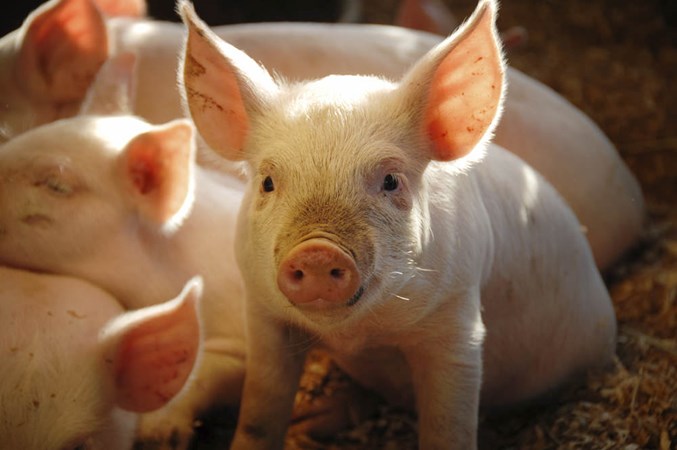7/15/2022
Last month, at least 2,000 cattle died of heatstroke during a Kansas heatwave. Higher temperatures, drought, and flooding are putting our food system in the hot seat.
No longer are we debating whether climate change will have catastrophic effects on human and non-human life; it’s quite clear we’re already there. The question has now become: how much damage are we willing to witness before we actually take substantive measures to stop it?
The United Nations Intergovernmental Panel on Climate Change, the leading scientific body specifically established to study and advise the fight against the climate crisis, has minced zero words: We now have only 8 years to make massive, structural change across the globe if we are to prevent the most devastating consequences of climate change. This year, the IPCC determined that switching to plant-based diets has the greatest potential for climate change mitigation.
Despite the IPCC's many grave warnings, the geopolitical wheels have been slow to turn towards concrete progress, and Mother Nature appears poised to serve the consequences on a silver platter.
In 2019, Europe witnessed one of the most intense heat wave ever recorded, with temperatures in the UK, Belgium, the Netherlands, Germany, and France setting all-time record highs of 101.7, 104, 105.3, 106.7, and 114.6 degrees Fahrenheit respectively—and as a result, whether from direct or indirect causes, human lives were lost.
As we continue our steamroll towards planetary breakdown, we risk these extreme weather events occurring in greater frequency and severity. That means our continued failure to reconstruct unsustainable industries and enforce meaningful market and political policies will result in increasing human and non-human fatalities.
Even worse, current research indicates these climatic consequences are set to disproportionately affect lower-income communities less equipped with the technology, information, and infrastructure to keep their people safe.
Beyond the human cost, these developments spell disaster for farmed animals trapped on factory farms.
In the wake of Europe’s 2019 heat wave, it was reported that thousands of chickens were killed by the skyrocketing temperatures at Moy Park Farm in Lincolnshire, UK—an industrial operation nestled in the small rural countryside. As outside heat rose above 100 degrees Fahrenheit, the extreme temperatures inside the animals’ metal enclosure likely caused mass suffering in the form of heat stroke and cardiac arrest. (Note: Due to the abject lack of transparency from the factory farming industry, there is no way to know just how prevalent this problem is among producers and how many other similar tragedies might have occurred during this recent heat wave, or others before it.)
Conditions on factory farms are bad enough, but it appears our climate crisis is compounding the cruelty. Since over 14.5% of global greenhouse gas emissions can be attributed to animal agriculture, about two-thirds of which is comprised of factory farms, the system itself is clearly adding fuel to the raging fire.
The unfortunate truth is that every component of today’s factory farming system contributed to the devastating loss of life at Moy Park Farm. The sheer volume of animals packed inside modern sheds reduces the available space for birds to escape the warmth of their neighbors and regulate body heat through natural behaviors, such as raising their wings to cool down. The ventilation and cooling systems in place do not seem to adequately maintain ambient temperatures below dangerous levels when outside heat intensifies—with no alternatives in place for when those systems malfunction. And decades of selective breeding and manipulation has pushed birds to grow so big, so fast, it has compromised their ability to properly breathe, circulate blood, and simply walk to cooler, less dense areas of the barn (which don’t exist at most facilities).
The factory farming system has stripped animals of the one thing required for survival in this age of global crisis: Adaptability.
And these climate-driven fatalities are not unique to the UK.
This past winter, hundreds of thousands of chickens, cows, and pigs trapped in factory farms died in floods in western Canada. In 2018, Hurricane Florence ravaged North Carolina, and under-prepared factory farms left more than 3 million chickens and 5,000 pigs to drown in the flood waters. In 1999, Hurricane Floyd took the lives of more than 2 million chickens and turkeys and 20,000 pigs. And the polar vortex and torrential flooding that hit the Midwest several years ago left a trail of destruction farmers scrambled to clean up.
How does the factory farming industry respond to these devastating events? They claim “no report of serious injuries or loss of life” or that only a small percentage of “inventory” was “destroyed”—indifferent and insensitive rhetoric about sentient beings that rings hollow to consumers.
Humans pay the price of these disasters, too. Breached manure lagoons leave lower-income communities and communities of color (that disproportionately surround factory farms) with enormous levels of pollution that can be seen from space. Nutrient runoff from crops destined for animal feed pollute ground water and feed toxic algal blooms along the Gulf states—states that have some of the highest percentages of black Americans.
While it’s difficult for scientists to definitively state that specific weather abnormalities are caused by rising global temperatures, the correlation has never been more apparent. A plurality of physicists, environmentalists, and climatologists have confirmed that rising global temperatures are unquestionably linked to the increasing risk of these disastrous weather events.
The reality is that factory farms were already failing on consumer trust, environmental safety, and animal welfare...but it’s clearer than ever that our climate crisis is making them even worse.
It’s long past time we see an end to factory farming, and while that starts with more compassionate consumer choices, it ends with demanding food businesses and government bodies reject the status quo and stop standing in staunch opposition to ending the climate crisis and the suffering of humans and non-humans alike.
*Image: Connor Creaghan/The Lincolnite
by Tyler Hazard - Alum

